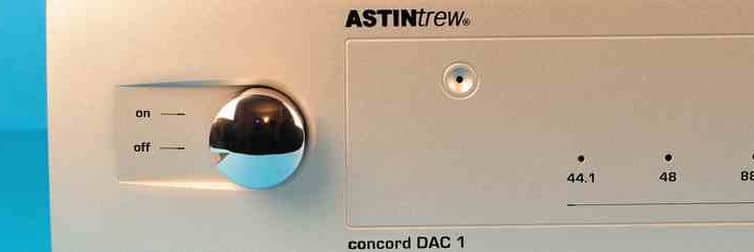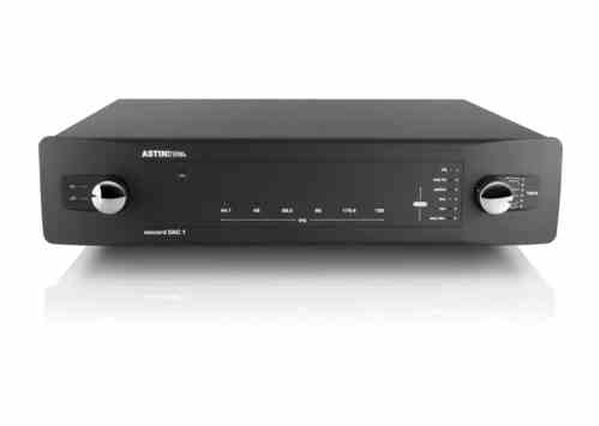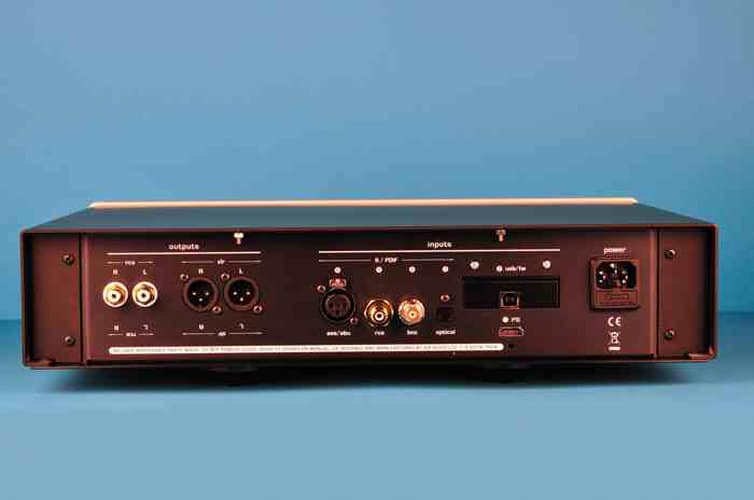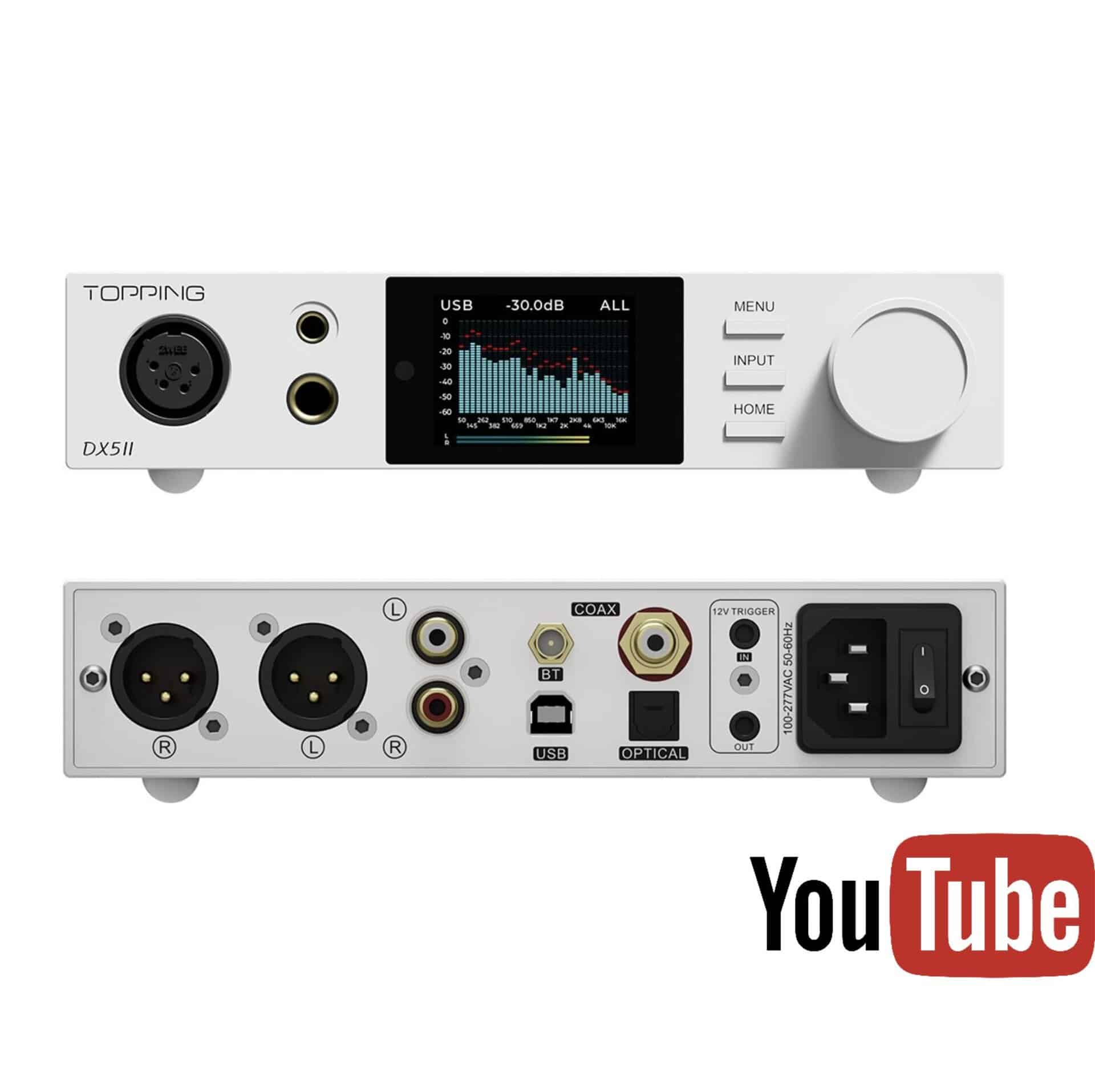The Article
Concord’s DAC-1: Simply…DAC 1
31st January 2016
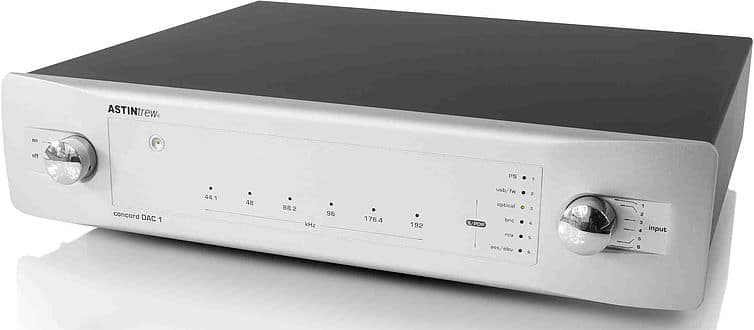
Astintrew has a new DAC design on offer via its Concord range of audiophile hi-fi. Paul Rigby reviews the DAC 1
Run by Michael Osborn, Astintrew has a reputation for quality products. I have, for example, always looked fondly upon his AT3500 CD player design.
On this occasion, the transport was left by the wayside as Osborn asked me to address his new Concord DAC, the DAC 1. Astintrew equipment has always been well built and the DAC 1 didn’t disappoint. Opening the box, it still managed to surprise me with its substantial chassis. It feels expensive, a DAC of quality. Underneath is a set of Astintrew’s own feet made from a mix of polymers.
Around the back are a whole gamut of connections including RCA outputs, buffered by a pair of ECC82 valves, while a pair of XLRs provide fully balanced output via solid state. Both sets of outputs work simultaneously.
A single slot on the board and rear panel can be filled with an Asyncronous USB or Firewire and able to handle sound files up to 24bit/192kHz while the I2S input is aimed at Astintrew’s forthcoming Concord Transport. Other sockets include an optical, RCA, BNC and RCA coax input.
Around the front is a solid, rotary input selector, another rotary selector, on the left, handles the power on and off and the currently playing music resolution figure file is highlighted on one of a series of labelled lights in the centre.
A modular design, the DAC 1 includes six regulated supplies and power sections that are separated from the data sections to minimise distortion.
SOUND QUALITY
To begin the sound tests, I wanted to utilise a CD as a source. Taking a two-box Densen B-475 as the transport, I hooked up my giant-killing Chord Qute HD as the DAC reference but with the addition of an upgraded power supply, the meaty SR3-12 from Paul Hynes, hooked into the rear with an Audiomica Alunite digital cable.
My reference system cost around half of the Concord box but that really didn’t mean much. The Chord Qute system regularly trounces more expensive DACs due to its use of a bespoke FPGA DAC and unique design.
Playing the DAC 1 was interesting. Mainly because the differences between it and the Chord were not blazingly obvious. This was not a black and white experience, which concerned me a touch. There were differences but they tended to reveal themselves during the course of play.
Spinning a copy of Tina Brooks jazz album, True Blue, both the trumpet and sax offered a weighty presence via the DAC 1. Playing these instruments, both Freddie Hubbard and Brooks offered a definite weight in their performance. Each supplied body and substance to the presentation.
Here, the midrange had a dense interpretation. The more I listened, the more information that gradually offered itself to the ear. This was a performance of significance. One that demanded attention. The Qute almost had a blasé attitude to the music when compared to the Concord that saw it as something different. One of consequence. In the meantime, the usually anonymous resident piano, centre stage, was now more focused and part of the mix. The removal of a slight cloud of bloom helped to give the keys a more rhythmic purpose.
In the background too there were improvements of note, as an enhanced reverb added both air and space, giving the soundstage extra presence.
Playing a selection of Porcupine Tree’s contemporary prog tracks, the often precise and focused secondary percussion displayed the DAC 1’s impressive timing. When the track launched into a high tempo rock sequence, the bass was noticeable by exhibiting both heft and weight while never slowing or dragging. Indeed, the bass acted as a foundation to the track, giving it impetus and basic rhythm. It never swamped the midrange, though, allowing the more delicate areas of the mix to shine through, especially Steven Wilson’s rather delicate vocal delivery. Speaking of Wilson, his vocal can sometimes be lacking in force and emotion via some CD players and DACs. He is not blessed with natural power but does have the ability to project emotion and nuance. The Concord was successful in this most important yet subtle areas of the track. The DAC 1 gave Wilson a measure of gravitas that is often lacking in many digital systems.
Connecting my Astell & Kern AK120 via the optical port and playing the 24bit/96kHz Bob Marley track, Jammin, from Legend: The Best Of Bob Marley & The Wailers, the differences between the Chord and the Concord where, again, not exactly stark. This point bears repeating. Often, price differences, especially at this end of the price spectrum, reveal major leaps in sound quality. But not here. This is probably more a testament to the excellent value for money of the Chord than any particular issues with the Concord.
Even so, there were still audible differences. Rather more subtle but, as the listening tests extended over time, these differences became more important. For example, there was a lack of harmful background noise via the DAC 1 on the Marley track. Noise that allowed the ear to hear Marley’s vocal, at times, be revealed as double tracked, while the secondary percussion effects were evenly spread across the entire sound stage rather than on the extremities. The rhythm guitar, too, was more detailed in its presentation while bass guitar found more bite and attack with the DAC 1.
Turning to the 24bit/88.2kHz version of Dire Straight’s So Far Away, from the best-selling album, Brothers In Arms, I began to ‘get’ the DAC 1…finally. That, in itself, reveals a lot about this machine. You have to go looking for ‘it’. This is because the Concord doesn’t try to impress you. As an aside, this is one of the very few DACs, in this price bracket, that I would say has no listening fatigue whatsoever.
Examining this Dire Straights track, there are plenty of highlights to enjoy. All subtle, once again, but all definitely there. Part of the reason for this subtlety was a definite midrange recess. This can be a good and a bad thing. Bad because a lot of the extra detail that the Concord offers to the ear has to be sought out by the ear, it’s not delivered on a plate. Good because the detail is there, if you want it, but this is one DAC that doesn’t act as a performing monkey. It’s not loud, brash and in your face.
Hence, the background supporting vocals add detail and complexity, secondary percussion features extra detail, distortive noise is minimised to improve clarity, the instruments sit as part of a melded mix instead of positioned on a pedestal while a touch of sweetness provides a very easy connection between the listener and the music.
CONCLUSION
In many ways, the performance of the DAC 1 improves along with the quality of the music. Which, in logical terms, is how it should be but that also means that those users who use only CD as their digital source might want to think twice about this DAC as a sonic addition to their hi-fi chain. For those with a broader digital library, the DAC 1 will provide a listening experience that will not shock you and won’t make you sit up in your seat with – it never, at any time, blew my socks off – but will provide a wholly satisfying listening experience. In fact, I would have liked the DAC 1 to have been just a touch more forthright in its behaviour and a little more boastful about its capabilities. As it is, its approach is low key, smooth and easy on the ear. Those looking to be ‘impressed’ by musical detail or wanting an incisive insight onto the mastering of the chosen track should look elsewhere for their sonic kicks. In drinking parlance, this DAC ain’t a large tumbler of neat bourbon, it’s a fluted glass of Baileys.
Astintrew DAC 1
Price: £3,780
NuNu Distribution
Website: www.nunudistribution.co.uk
Tel: 0203 5442338
Email: [email protected]
Good: detail, bass, presence & low listening fatigue
Bad: recess midrange

